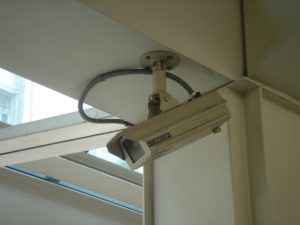 The United States Supreme Court recently reversed a judgment of the Sixth Circuit in Honeycutt v. United States. In the decision, the United States Supreme Court ruled that under 21 U.S.C. §853(a)(1), which mandates forfeiture of property derived from certain drug crimes under federal law, “a defendant may [not] be held jointly and severally liable for property that his co-conspirator derived from the crime but that the defendant himself did not acquire.”
The United States Supreme Court recently reversed a judgment of the Sixth Circuit in Honeycutt v. United States. In the decision, the United States Supreme Court ruled that under 21 U.S.C. §853(a)(1), which mandates forfeiture of property derived from certain drug crimes under federal law, “a defendant may [not] be held jointly and severally liable for property that his co-conspirator derived from the crime but that the defendant himself did not acquire.”
The background was as follows. “Terry Michael Honeycutt [the petitioner here] managed sales and inventory for a … hardware store owned by his brother, Tony Honeycutt. After observing several “‘edgy looking folks’” purchasing an iodine-based water-purification product known as Polar Pure, Terry Honeycutt contacted the [police] to inquire whether the iodine crystals in the product could be used to manufacture methamphetamine…. An officer confirmed that individuals were using Polar Pure for this purpose and advised [Terry] to cease selling it if the sales made [him] ‘uncomfortable.’…. Notwithstanding the officer’s advice, the store continued to sell large quantities of Polar Pure. Although each bottle of Polar Pure contained enough iodine to purify 500 gallons of water, and despite the fact that most people have no legitimate use for the product in large quantities, the brothers sold as many as 12 bottles in a single transaction to a single customer. Over a 3-year period, the store grossed roughly $400,000 from the sale of more than 20,000 bottles of Polar Pure…. [T]hese sales prompted an investigation” that led to the indictment of “the Honeycutt brothers for various federal crimes relating to their sale of iodine while knowing or having reason to believe it would be used to manufacture methamphetamine.” In addition, “the Government sought forfeiture money judgments against each brother in the amount of $269,751.98, which represented the hardware store’s profits from the sale of Polar Pure. Tony Honeycutt pleaded guilty and agreed to forfeit $200,000. Terry went to trial” and was convicted on numerous counts. “The [federal] District Court sentenced Terry … to 60 months in prison. Despite conceding that Terry had no ‘controlling interest in the store’ and ‘did not stand to benefit personally,’ the Government insisted that the District Court ‘hold [him] jointly liable for the profit from the illegal sales.’…. The Government thus sought a money judgment [against Terry] of $69,751.98, the amount of the conspiracy profits outstanding after Tony[’s] … forfeiture payment. The District Court declined to enter a forfeiture judgment, reasoning that [Terry] was a salaried employee who had not personally received any profits from the iodine sales…. [T]he Sixth Circuit reversed,” opining that the brothers were jointly and severally liable for the proceeds of their crimes and, therefore, “that each brother bore full responsibility for the entire forfeiture judgment.” Terry sought certiorari. Continue reading →
 Massachusetts Criminal Lawyer Blog
Massachusetts Criminal Lawyer Blog










